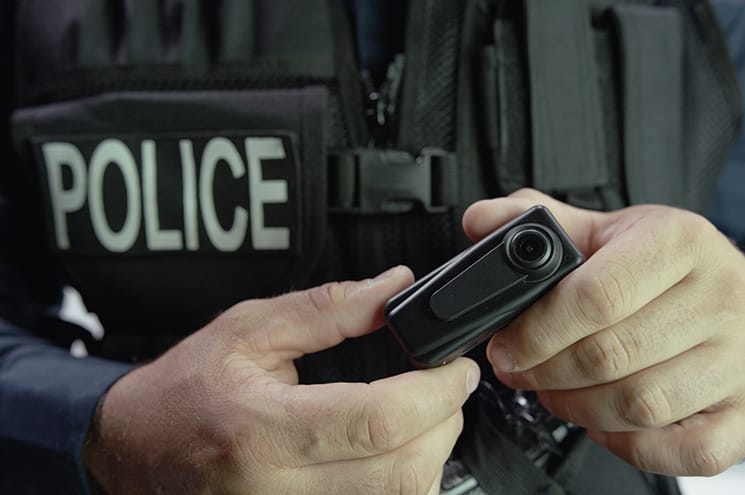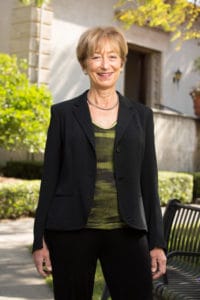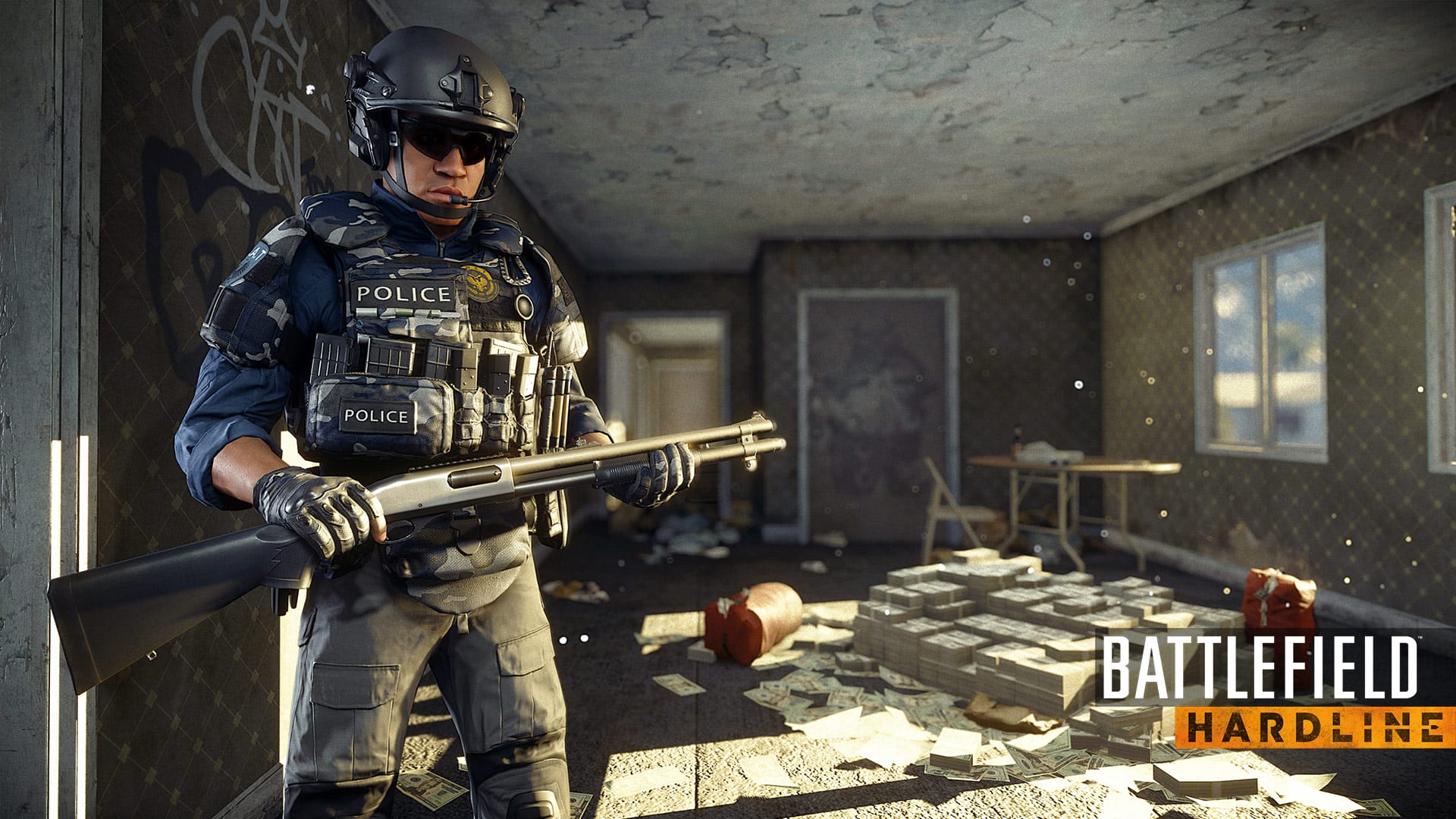Law and Order … and Understanding

By Nick Owchar
From St. Louis to Dallas, in cities and towns across the country, a gap is growing between police and the people they protect.
For some, that gap is more like a canyon: Especially over the past two to three years, shootings involving police and citizens (and the protests that follow) have grabbed news headlines and demonstrated a serious crisis in a civic relationship that some people have always taken for granted.
Behind the Badge, a recent survey of some 8,000 police officers conducted by the Pew Research Center and the National Police Research Platform, highlights the stark differences between public and police perceptions of law enforcement and the need for greater mutual understanding to overcome the current crisis.
Claremont Graduate University (CGU) is responding to that need.
Across the university, faculty and students in the Division of Behavioral & Organizational Sciences (DBOS), the Division of Politics & Economics (DPE), and the Drucker School of Management are engaged in critical research to bridge this gap.
Cutting-edge work being conducted at CGU includes exploration of the challenges and issues raised by dashboard and body cameras, research on the controversial stop-and-frisk policy, and an examination of strategies to cope with tremendous stress and make more effective decisions.
Camera vs. Memory: Where Is the Truth?
This past January, a Bay Area headline announced a powerful milestone:
“Public Sees First San Francisco Officer-Involved Shooting Caught on Body Cam.”
What does the public see on this body cam footage? According to public defender Jeff Adachi, the footage shows two police officers wrongfully shooting and wounding a suspect when they should have backed down.
“We feel that the video clearly demonstrates that the police version put forward was incorrect,” Adachi said in a report posted by San Francisco’s CBS affiliate news station.
That single comment by the public defender—about the accuracy of video versus the officer’s version—suggests a growing conflict as more departments nationwide introduce camera technologies to produce records of what police are experiencing on their beats.
It is a conflict that falls squarely at the center of the work of Kathy Pezdek, a cognitive psychology professor in DBOS.
Pezdek, who has spent her career studying and writing about eyewitness memory, is concerned about something very specific: allowing officers to review their body cam or dash cam videos before writing up their incident reports.
“I’m not against the use of body and dash cams. I’m very much an advocate,” she explained, “but there are several important questions that should be answered before they’re fully implemented. I think good science can help with that process.”

Body cameras are a recent addition to law enforcement. The first tests of body-worn cameras were conducted in 2005 in the United Kingdom. Their use in the United States only gained wide attention in 2014. (Dash cams, similarly, have not been in use very long.) Before their introduction, incidents involving police relied on one or two lines of evidence: the firsthand report of the involved officer and any additional reports by eyewitnesses.
Now the camera’s lens has introduced another line, and Pezdek says the implications of letting officers review this footage before they write up their reports are very problematic.
She expressed her concern in a recent piece for The Marshall Project.
“The problem,” she writes, “is that in [permitting officers to review footage], two independent lines of evidence—the officer’s eyewitness memory and the recorded footage—are no longer two independent lines of evidence.”
On the other side of the issue are officials such as Bill Bratton, New York City’s police commissioner, who says police should be able to review their footage for the sake of accuracy in their reports. For Bratton and supporters, preventing officers from reviewing footage before they make their reports turns into “a game of gotcha with the cops.”
But Pezdek disagrees.
“Think of this like blood or another DNA sample at a crime scene,” she says. “You wouldn’t want those to mix, would you? You don’t want the same lab tech with the same gloves working with many different samples; the evidence will get tainted. It is the same thing with video footage. We don’t want to taint original memories, either. We want to maintain their integrity, too.”
Pezdek says she first formulated this attitude toward police footage while assisting the American Civil Liberties Union (ACLU) in drafting its position on this issue. For Pezdek, no one is playing a game of “gotcha” with police officers—it is a matter of preserving original memories, which are far more fragile than anyone might understand.
“I’ve been studying the suggestibility of memory for a long time,” says Pezdek.
Along with her elected fellowship to the Association for Psychological Science and service on the editorial boards of several leading journals in the field, Pezdek has worked with the courts at the federal, state, and superior court levels on issues involving eyewitness memory. “It’s never the case that we experience anything in the world as an isolated event. We’re always building on related things and those related things affect our memories of the event. ”
What Video Games Show Us
To help shape the debate on how police video footage is used with empirical data, and to show the complicated issues of memory that haven’t been considered enough in the implementation of dash and body cams, Pezdek is doing more than just writing about her perspective.
She’s also testing it.
Pezdek is now conducting a program of research that asks, how does reviewing a video of an event affect—and change—our original memories of that event?
With CGU doctoral student David Hengerer, Pezdek has asked around 150 participants to play a video game that simulates high-stress scenarios similar to what a police officer experiences in a use-of-force incident.
Their sessions with the game—Battlefield Hardline, a first-person shooter game—are recorded. Half of the subjects get to review these recordings before answering questions about the game, including how they reacted and what they thought of their reactions. Did they use too much force? Was shooting justified?

Now in the middle of the initial study—which Pezdek and Hengerer will use to propose grant funding from the National Science Foundation’s Law and Social Science program—Pezdek is understandably reluctant to draw conclusions, though she says they are seeing results that suggest original memories are clearly affected by reviewing video footage.
“Nothing that we’re doing can undermine the use of these cameras,” she cautions. “Our point is to raise some important policy questions before many more departments rush ahead and equip their officers with them.”
While supporters of video review argue that they want officers to avoid discrepancies in their reports, Pezdek says that those discrepancies, when they do exist, are important. What an officer perceives in moments of great stress is just as important as what the camera captures.
“A police officer’s perception of using force on a suspect, at the moment when the incident is taking place, can be very different from what hindsight—or a camera—will tell us,” she explains. “It is important to understand what those original perceptions are. That doesn’t work against police officers: It helps them. It explains to us what they were thinking in a very tense, highly charged moment.”
And that returns us to the San Francisco police officer-involved shooting criticized by the public defender’s office.
According to the news report, the video shows several moments during the encounter when officers might have de-escalated the incident.
But, bearing Pezdek’s study of original memories in mind, how did the officers feel at the time? What were their original perceptions?
According to the report, they said they felt threatened—the suspect stood at the top of a staircase cursing at them. Both officers said they felt at a disadvantage because he held the higher ground. He was also physically larger than both officers.
Adding to the tension of the situation, the stairwell was also very dark in the early morning hours. All of this contributed to an atmosphere of menace that the camera’s eye didn’t necessarily capture—and that the public defender failed to note, as well.
As part of a career devoted to social impact, Pezdek says this work is rewarding because it enables her to combine scientific methodology with a civil liberties application.
That, she says, sets CGU apart from what is taking place at other universities.
“People are doing solid research here and taking the next step and applying it as well. That’s unusual in an academic setting,” she explained. “Often, the attitude you find is to keep science and application separate. Scientists publish the science, but application is considered dirtying one’s hands. But my question is, how do you know if it’s right or not unless you test it? The real world is the best testing ground.”
Other Related CGU Research
Stop-and-Frisk: Is it possible to reform and refine the stop-and-frisk policy of the NYPD? For Division of Politics & Economics and Center for Information Systems & Technology doctoral student Roger Chin, the answer requires a nuanced, holistic approach. In fact, Chin has spent much of his research on the topic exploring and analyzing data to help change attitudes toward this policy.
This academic year, Chin was honored by the Network of Schools of Public Policy, Affairs, and Administration for an analysis of a decade’s worth of data about the stop-and-frisk policy used by the New York Police Department. That analysis, which is the basis of his paper “The Unexplored Gender Dynamics of the Stop-and-Frisk Policy From a Quantitative and Spatial Perspective,” was honored with the Pi Alpha Alpha Best Doctoral Student Manuscript award. Read more about Chin’s research.
Policing and the Power of Mindfulness: Police, paramedics, and firefighters work in high-stress situations that can have damaging consequences for their health and decision-making. A new study shows that patterns of cortisol, the hormone that regulates the body’s stress response, among police officers suggests chronic and acute stress and trauma make them far more susceptible to cardiovascular disease. And along with the physical effects, these experiences affect officers’ psychological and emotional abilities to make sound decisions under pressure.
Drucker School of Management Associate Professor of Practice Jeremy Hunter has teamed with Richard Goerling, a detective lieutenant, retired U.S. Coast Guard commander, and founder of the Mindful Badge Initiative, to give public safety leaders training in contemplative practices to help them in their leadership roles and decision-making, especially in the middle of an intense crisis. They recently launched the program with a full-day workshop—attended by police officers and chiefs from several Southland cities—at CGU DTLA, the university’s classroom space in The Reef building in Downtown Los Angeles. The inaugural event was a success, said Hunter and Goerling. A two-day workshop is scheduled for February 2018 to address this need in law enforcement. Read more about policing and mindfulness.